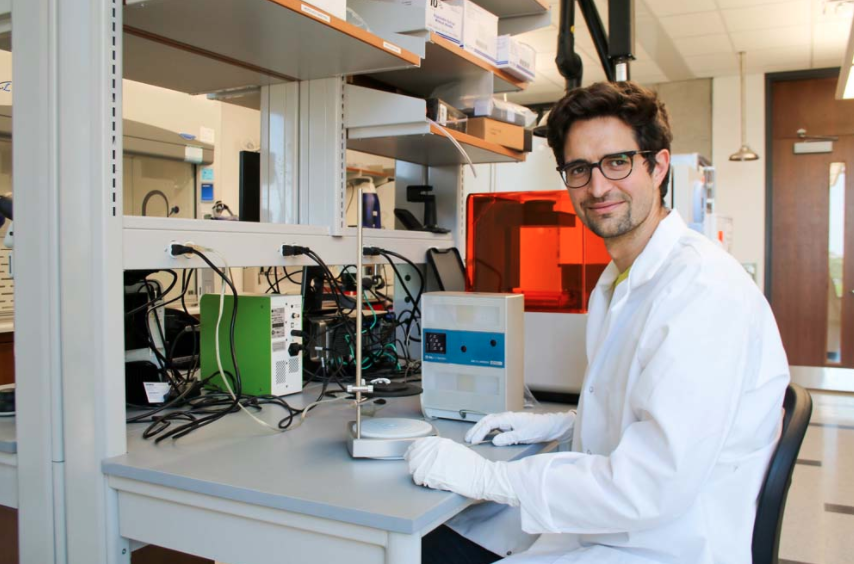Dr. Manuel Rausch from the Departments of Biomedical Engineering and Aerospace Engineering and Engineering Mechanics at UT Austin has received a National Science Foundation (NSF) Faculty Early Career Development Program (CAREER) award for 2021.
His proposal, Towards a Fundamental Understanding of Why Thrombus Dissolves, Persists, or Breaks Off, will serve as the blueprint for a five year project in which Rausch will develop experimental and computational strategies that provide a better understanding of the biophysical properties of blood clots.
Rausch is an Oden Institute faculty affiliate and Grand Challenge Award winner from 2020 (see below).
When a thrombus, or blood clot, forms in a vein or artery it can take one of several paths: it can eventually dissolve, causing no health issues; it might be quiet and still, but persist; or in the worst-case scenario, it can embolize, or break off, then travel within the blood stream and become stuck in an artery. If the clot blocks a main artery, it could lead to a number of serious medical conditions including stroke, heart attack, or pulmonary embolism, making it one of the most common causes of death.
There are a number of known factors associated with patients who are more likely to develop blood clots, but Rausch says why and when a clot takes one path over another is not currently understood in the medical community. He aims to offer answers to these questions with this new research.
Rausch and his graduate students will conduct the research in the Soft Tissue Biomechanics Lab, where they will study the biophysical properties of blood. They will test the blood’s physical properties such as stiffness, fracture toughness, and permeability using mechanical equipment in the lab. Testing for stiffness, which Rausch says is the most fundamental property, will assess how the clot reacts when being pulled. Fracture toughness will measure how it resists being torn apart, which correlates with the likelihood of the clot breaking off. Permeability tells researchers how easily a thrombus can be penetrated by a fluid.
Using the results from the physical experiments, Rausch will then develop two types of computational models — a microstructural model and a predictive, continuum model — to help understand and predict the fate of a blood clot.
“The computational models developed from this research will provide the framework to aid in the optimization of treatment and therapeutic technologies for patients suffering from blot-clot related diseases,” he said.
The NSF CAREER award is among the most prestigious offered to junior faculty, providing up to five years of funding to those who exemplify the role of teacher-scholars through outstanding research, excellent education, and the integration of education and research within the context of their organizations' missions.
W. A. "Tex" Moncrief Grand Challenge Awards
Rausch is a current W. A. "Tex" Moncrief Grand Challenge Awardee, a fund given to faculty at the Oden Institute who submit highly compelling research proposals related to the Grand Challenges in computational engineering and sciences that affect the competitiveness and international standing of the nation.
For his Grand Challenge, Rausch proposed the development of a machine-learning based tool that mimics the tricuspid valve in the human heart. This valve has the important job of directing blood flow through the heart and keeping blood from leaking. In 86% of people, the valve shows some leakage, and in 1.6 million people, the valve is severely compromised, according to the proposal.
Unfortunately, the tricuspid valve’s anatomy is inconsistent and varies from person to person, making it hard to predict the effects of inconsistencies and making it hard to repair. When operating on the tricuspid valve, surgeons must make split second decisions trying to determine how their actions could affect function.
Rausch’s proposed virtual model would become a training tool to incorporate “the complexities of a human tricuspid,” and take in data from high-precision supercomputer simulations so that a researcher can change parameters on the model and learn what effect it would have on valve function.
